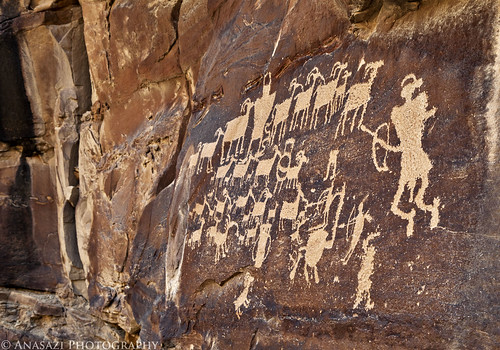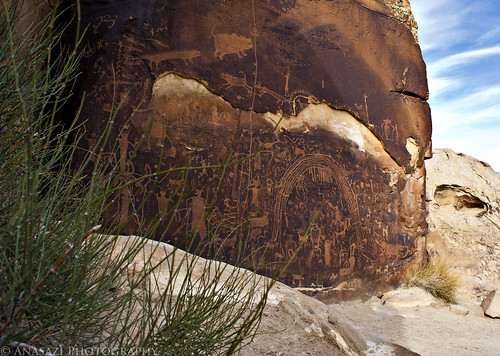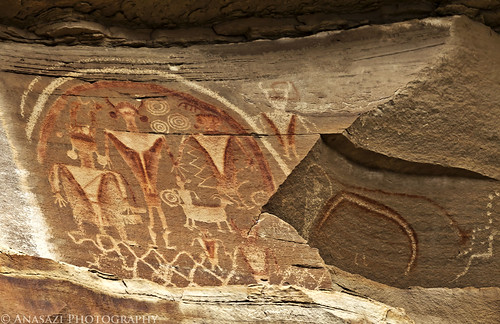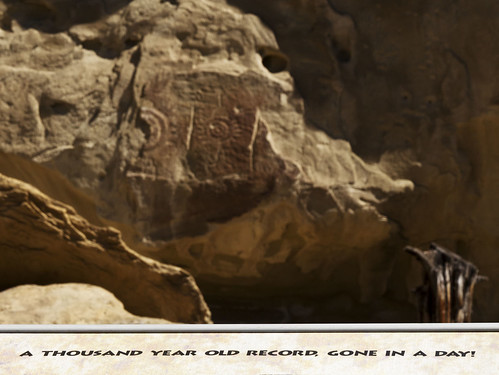This is probably one of the most famous petroglyph panels around. The Great Hunt Panel in Cottonwood Canyon, a side canyon of Nine Mile Canyon, is an incredible display of Fremont petroglyphs. One theory about this panel is that the horned anthropomorphic figure near the middle and top of the panel may represent a hunt shaman with a herd of bighorn sheep during a migration and that the lines connecting all of the figures may represent consanguinity. Whatever the possible meaning behind this panel, the fact remains that it is a must-see site for any rock art enthusiast!
Fremont Rainbow Panel
Here’s part of an amazing Fremont pictograph and petroglyph (pictoglyph) panel located in the Ferron Box of the San Rafael Swell. The panel extends to the left, but that part of it was destroyed by a vandal who left behind a layer of plaster after a failed attempt to make a copy. It’s unfortunate, I would love to have seen the full panel intact.
A Thousand Year Old Record, Gone in A Day!
Rock art is thought to represent the spiritual expression of people who lived here long ago. The fremont people who lived here from about AD 500 to AD 1100 left symbols on the rock which had tremendous meaning to them. The Shield site remains an example of what vandalism can do to a once beautiful and interesting archaeological site.
Parties, camping, tree cutting and outright deliberate destruction of the rock art have destroyed this site. No scientific knowlege will ever be gained here. No quiet enjoyment is possible. And, no one can feel anything but sorrow while viewing the remains of symbols left by people over a thousand years ago.
It belongs to you.



